1. Introduction
Evolution is biology’s central theory. In Topics 7.1 – 7.5 of AP Bio, we looked at two of the mechanisms (natural selection and genetic drift) by which evolution occurs. Now, in Topics 7.6 – 7.8, we’ll look at the evidence upon which this theory is based.
In the United States, while the idea of evolution is accepted by a majority of the population, evolution’s status as a well-supported scientific theory is widely misunderstood(Science Daily). So let’s start by clarifying the distinction between a theory and a hypothesis.
2. A theory is much more than a hypothesis
In common speech, the word theory is often used in a way that’s synonymous with words like “opinion” or “belief.” For example, you’ve probably heard someone say something like: “That’s your theory. Let me tell you mine.”
That use of the word theory is closer to the scientific idea of a hypothesis. A hypothesis is an idea that requires testing. In science, a theory is an explanation that’s already been tested many times. Unlike a hypothesis, a theory is supported by a significant amount of evidence.
Any science student should be able to quote these definitions for how the words theory and hypothesis are used in a scientific context.
- Theory: An organized explanation of some aspect of the natural world that has been thoroughly tested and is well supported by evidence.
- Hypothesis: A unproven idea or explanation that you can test through study and experimentation. (adapted from Vocabulary.com)
To sharpen your ability to distinguish between a scientific theory and a hypothesis, read the following passages.
A theory explains a phenomenon, accounts for all available data, and is supported by a huge body of evidence. Hypotheses are just guesses that need testing.
Adapted from: Ruth Levy Guyer, Professor of Immunology and Bioethics, Johns Hopkins University and Haverford College.
A theory is a well-established principle that has been developed to explain some aspect of the natural world…while a hypothesis makes a specific prediction about a specified set of circumstances. A theory has been extensively tested and is generally accepted, while a hypothesis is a speculative guess that has yet to be tested.
Adapted from Kendra Cherry, About.com, Introduction to Research Methods
Work on these flashcards until you can recite the definitions of theory and hypothesis from memory.
3. Theory vs. Hypothesis Flashcards
[qdeck bold_text=”false” qrecord_id=”sciencemusicvideosMeister1961-Theory vs Hypothesis FC(v2.0)”]
[h]Flashcards: Theory v. Hypothesis
[i]Biohaiku
Theory in science
A validated idea
Much more than a hunch
[q]Define theory.
[a]A theory is an organized explanation of some aspect of the natural world that has been thoroughly tested and is well-supported by evidence.
[q]Define hypothesis.
[a]A hypothesis is an unproven idea or explanation that you can test through study and experimentation.
[x][restart]
[/qdeck]
4. Theory vs. Hypothesis Quiz
Take the quiz below to make sure that this distinction between theory and hypothesis is clear.
[qwiz style = “border: 3px solid black; ” qrecord_id=”sciencemusicvideosMeister1961-Theory vs Hypothesis Quiz (v2.0)”]
[h]Theory v. Hypothesis
[q]In the scientific method, the next step after posing an initial question or making an interesting observation is to formulate a testable
[c]SHlwb3Ro ZXNpcw==[Qq]
[c]VGhlb3J5[Qq]
[f]WWVzLiBBIGh5cG90aGVzaXMgaXMgYSB0ZXN0YWJsZSBpZGVhLg==[Qq]
[f]Tm8uIFRoZW9yaWVzIGFyZSBNVUNIIGJpZ2dlciB0aGFuIHRlc3RhYmxlIGlkZWFzLiBUaGVvcmllcyBzdGFuZCBvbiBhIHNvbGlkIGZvdW5kYXRpb24gb2YgYWNjdW11bGF0ZWQgZXZpZGVuY2Uu
Cg==[Qq]
[q]In the 1800s, two German scientists proposed that all living things are composed of cells and that cells are the fundamental units of life. During the past two hundred years, no living thing has ever been discovered that does not consist of cells. At this point, these ideas about cells are best understood as being a
[c]SHlwb3RoZXNpcw==[Qq]
[c]VGhl b3J5[Qq]
[f]Tm8uIFRoaXMgaWRlYSwgd2hpY2ggYXBwbGllcyB0byBhbGwgbGlmZSwgaXMgbXVjaCBiaWdnZXIgdGhhbiBhIGh5cG90aGVzaXMu[Qq]
[f]WWVzLiBUaGlzIGlzIHRoZSBjZWxsIHRoZW9yeS4gSXQgaGFzIGVub3Jtb3VzIHByZWRpY3RpdmUgcG93ZXIgYW5kIGhhcyBiZWVuIGNvbmZpcm1lZCBieSBldmVyeSBsaXZpbmcgdGhpbmcgZXZlciBkaXNjb3ZlcmVkLg==
Cg==[Qq]
[q]A specific and testable proposal that attempts to explain a limited set of observations is a
[c]SHlwb3Ro ZXNpcw==[Qq]
[c]VGhlb3J5[Qq]
[f]Q29ycmVjdDrCoEEgc3BlY2lmaWMgYW5kIHRlc3RhYmxlIHByb3Bvc2FsIHRoYXQgYXR0ZW1wdHMgdG8gZXhwbGFpbiBhIGxpbWl0ZWQgc2V0IG9mIG9ic2VydmF0aW9ucyBpcyBhwqA=aHlwb3RoZXNpcy4=[Qq]
[f]Tm8uIEEgdGhlb3J5IGlzIGEgd2VsbC1lc3RhYmxpc2hlZCBwcmluY2lwbGUuIFdoYXQmIzgyMTc7cyBkZXNjcmliZWQgYWJvdmUgaXMgbXVjaCB0b28gbmFycm93IHRvIGJlIGEgdGhlb3J5Lg==
Cg==[Qq]
[q]Scientists are measuring the effect of a certain hormone on the growth of breast cancer cells. They think that this hormone might increase the growth of tumors. This is an example of a
[c]SHlwb3Ro ZXNpcw==[Qq]
[c]VGhlb3J5[Qq]
[f]WWVzLiBBIHNwZWNpZmljLCBsaW1pdGVkIHByZWRpY3Rpb24gc3VjaCBhcyB0aGUgb25lIGxpc3RlZCBhYm92ZSBpcyBhIHBlcmZlY3QgZXhhbXBsZSBvZiBhIGh5cG90aGVzaXMu[Qq]
[f]Tm8uIFRoaXMgaXMgbXVjaCB0b28gbGltaXRlZCBhbiBpZGVhIHRvIHF1YWxpZnkgYXMgYSB0aGVvcnkuIFRoZW9yaWVzIGFyZSBiaWcuIFRoZXkgZXhwbGFpbiBhIGxvdCBvZiB0aGluZ3MuIFRoaW5rIG9mIGdyYXZpdHkgb3IgZXZvbHV0aW9uIHRvIHJlbWluZCB5b3Vyc2VsZiBvZiB0aGUgZW5vcm1vdXMgc2NvcGUgb2YgYSB0aGVvcnku
Cg==[Qq]
[q]A proposed idea about the speed of falling objects was published by a scientist in the 1600s. Over the next centuries, this proposal was supported by a variety of experiments on earth, and by observations of objects in space. No observation refuting this idea has ever been made. At this point, this idea is best classified as a
[c]SHlwb3RoZXNpcw==[Qq]
[c]VGhl b3J5[Qq]
[f]Tm8uIFRoaXMgaXMgbXVjaCB0b28gZ3JhbmQgdG8gYmUgYSBoeXBvdGhlc2lzLiBJdCBjb3ZlcnMgZmFsbGluZyBvYmplY3RzIGFuZCBvYmplY3RzIGluIHNwYWNlLiBBIGh5cG90aGVzaXMgd291bGQgYmUgbXVjaCBtb3JlIG5hcnJvdywgYW5kIG5vdCBleHBsYWluIHN1Y2ggYSB3aWRlIHZhcmlldHkgb2YgdGhpbmdzLg==[Qq]
[f]WWVzOiB0aGlzIGlzIHRoZSB0aGVvcnkgb2YgZ3Jhdml0eS4gSXQgaGFzIGVub3Jtb3VzIHBvd2VyIHRvIGV4cGxhaW4sIGFuZCBpdCYjODIxNztzIGJlZW4gcmVwZWF0ZWRseSBjb25maXJtZWQgZm9yIGh1bmRyZWRzIG9mIHllYXJzLg==
Cg==[Qq]
[q]A well-substantiated explanation of some aspect of the natural world, based on a body of facts that have been repeatedly confirmed through observation and experiment.
[c]SHlwb3RoZXNpcw==[Qq]
[c]VGhl b3J5[Qq]
[f]Tm8uIEEgaHlwb3RoZXNpcyBpcyBhIHRlbnRhdGl2ZSBwcmVkaWN0aW9uIHRoYXQgc3RpbGwgbmVlZHMgdG8gYmUgY29uZmlybWVkIGJ5IGV4cGVyaW1lbnQu[Qq]
[f]WWVzLsKgQSB3ZWxsLXN1YnN0YW50aWF0ZWQgZXhwbGFuYXRpb24gb2Ygc29tZSBhc3BlY3Qgb2YgdGhlIG5hdHVyYWwgd29ybGQsIGJhc2VkIG9uIGEgYm9keSBvZiBmYWN0cyB0aGF0IGhhdmUgYmVlbiByZXBlYXRlZGx5IGNvbmZpcm1lZCB0aHJvdWdoIG9ic2VydmF0aW9uIGFuZCBleHBlcmltZW50wqA=aXMgYSBiZWF1dGlmdWwgZGVmaW5pdGlvbiBvZiBhIHRoZW9yeS4=
Cg==[Qq]
[q]A group of students sets up an experiment to test the idea that tomato plants grown in blue light will produce larger fruit than tomatoes grown in regular sunlight. This idea would best be classified as a
[c]SHlwb3Ro ZXNpcw==[Qq]
[c]VGhlb3J5[Qq]
[f]WWVzLiBUaGUgbmFycm93bmVzcyBvZiB0aGUgaWRlYSBhbmQgaXRzIHRlbnRhdGl2ZSBuYXR1cmUgY2xhc3NpZnkgdGhpcyBhcyBhIGh5cG90aGVzaXMu[Qq]
[f]Tm8uIEEgdGhlb3J5IHdvdWxkIGhhdmUgdG8gYmUgbXVjaCB3aWRlciBpbiBzY29wZSwgYW5kIG11Y2ggbW9yZSBwb3dlcmZ1bCBpbiBpdHMgYWJpbGl0eSB0byBleHBsYWluIHRoaW5ncy4=
Cg==[Qq]
[q]The idea that all infectious diseases are caused by germs (bacteria or viruses) has been repeatedly confirmed by hundreds of observations.
[c]SHlwb3RoZXNpcw==[Qq]
[c]VGhl b3J5[Qq]
[f]Tm8uIFRoaXMgaXMgYW4gaWRlYSB0aGF0IGNvdmVycyBBTEwgaW5mZWN0aW91cyBkaXNlYXNlcy4gSXQmIzgyMTc7cyBtdWNoIHRvbyBicm9hZCB0byBiZSBhIGh5cG90aGVzaXMu[Qq]
[f]WWVzLiBUaGlzIGlzIHRoZSBnZXJtIHRoZW9yeSBvZiBkaXNlYXNlLCBhbmQgaXQmIzgyMTc7cyBiZWVuIHJlcGVhdGVkbHkgY29uZmlybWVkIGZvciB0aGUgcGFzdCAxNTAgeWVhcnMu[Qq]
[x]
If you want to take this quiz again, click the button below
[restart]
[/qwiz]
5. To prove evolution to be true, we need evidence of descent with modification
Darwin had a three-word phrase that, for him, summed up the process of evolution: descent with modification.
- Descent means “coming from an ancestor.”
- Modification means “change.”
Descent with modification means that over time, a population might change in ways so that the descendants are different from the ancestors. Or, if you run the clock backward, it means that the current form of a population (or an entire species) might be different from its ancestral form.
So what’s the evidence that descent with modification has occurred? We’ll start below by looking at examples of evolutionary change that have been directly observed during the past century and a half since Darwin published On the Origin of Species. From there, we’ll move on to patterns and features of living things that can only be explained as a consequence of evolutionary changes within a single lineage, or within groups of related species. Along the way, we’ll look at the fossil record, and see how vestiges of past life show how life has changed over time.
6. The Evolution of SARS-CoV-2 Variants
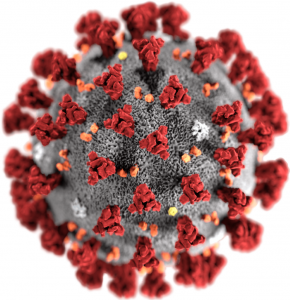
We’ll start with an example of evolutionary change that you’ve observed directly (along with everyone else on the planet). Starting in 2019, the evolution of SARS-CoV-2 variants has been an example of rapid evolutionary change — with disastrous effects on human beings.
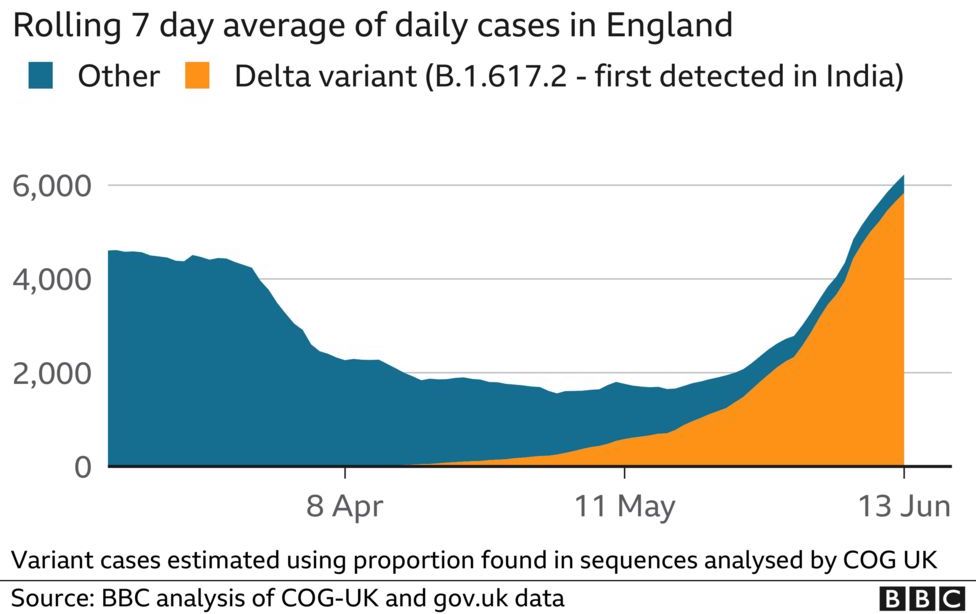
The term variant comes from the word vary: it means “different type.” Every time someone is infected with SARS-CoV-2, they produce billions of new viruses. During the replication process, random mutations in SARS-CoV-2’s genes can cause new variants to emerge. Most of those variants result in viruses that don’t work well at infecting cells and moving from one person to the next. However, from time to time, a variant arises that’s more successful than its ancestors at moving from person to person, infecting cells, and replicating while evading the human immune system. Through natural selection, that new variant starts to spread.
For example, the graph on the left shows the rise of the Delta Variant in England between April and mid-June of 2021. The Delta variant is a descendant (with modification) of a previous strain of the virus.
Starting at the end of 2021, the Omicron variant performed the same feat, quickly becoming the dominant strain of the virus in the United States (and the entire world). In the same way as populations of Peppered Moths in Northern England shifted from white to black in response to industrial pollution, populations of SARS-CoV-2 shifted from one variant to another.

How did this change occur? Through mutation followed by natural selection. Each variant has had genotypic and phenotypic differences from its ancestors. For SARS-CoV-2, the genotypic changes have involved changes in its RNA genome. The phenotypic differences have involved changes in the virus’s proteins, particularly its spike protein.
In the case of the Delta variant, a mutation in RNA altered a single amino acid in the SARS-CoV-2’s spike protein that made it much easier for this variant to enter cells.
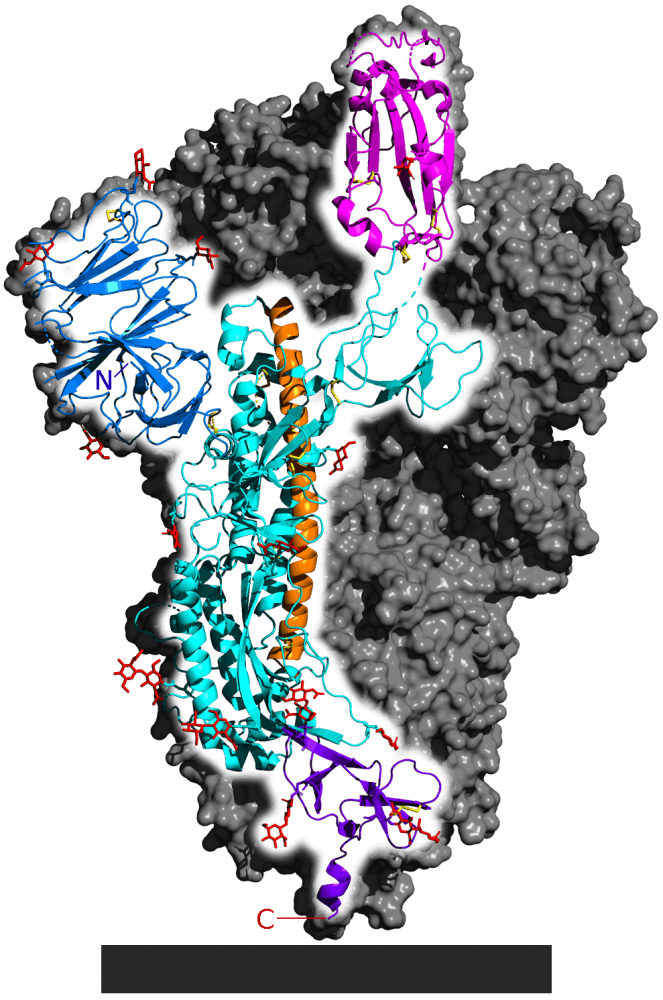
The Omicron variant has a distinctive combination of more than 50 mutations. These mutations made Omicron far more transmissible than its predecessors. Thankfully, it also seemed to make the disease caused by an Omicron infection less severe than infection with other strains.
The takeaway: the spread of SARS-CoV-2 variants is a clear case of descent with modification. It’s an example of evolutionary change that occurred, in some cases, in a matter of months.
If you want to learn more about SARS-CoV-2 and COVID-19, you can do so through this tutorial in AP Bio Unit 6 on Learn-Biology.com.
7. Evolution of antibiotic-resistant bacteria and the rise of MRSA

Another example of evolution that’s been observed in recent times has been the emergence of bacterial strains that are resistant to antibiotics.
Let’s start with two key definitions:
- Antibiotics are drugs that kill bacteria.
- A bacterial strain is a subtype of a bacterial species with a unique genetic makeup and phenotype. You can think of “bacterial strain” as roughly equivalent to the viral variants we discussed above, or domesticated varieties of dogs or wild cabbage that we discussed earlier in this course.
Antibiotic-resistant bacterial strains have evolved ways to not be killed by antibiotics. That makes infections with these bacterial strains very dangerous.
Antibiotics were first widely used in the 1940s. One of the first antibiotics is called Penicillin, a substance that was derived from the Penicillium fungus. One of the targets of penicillin was the bacterial species Staphylococcus aureus (often called “Staph aureus,” S. aureus, or “staph“). Normally, S. aureus, along with many other types of bacteria, lives harmlessly on our skin and other parts of our bodies. But there are also forms of S. aureus that can cause skin and sinus infections, along with food poisoning, pneumonia, and wound infections.
When penicillin was first used, it was highly effective at curing staph infections. But by 1950, only ten years after penicillin was first isolated and only 8 years after its first clinical use, 40% of S. aureus studied were penicillin-resistant. By 1960, this had risen to 80%. Now it’s about 98%.
What happened? It’s all about natural selection. Here’s an infographic that illustrates the process.

- Image “A shows the initial population. Most bacterial cells (the gray ones) are susceptible to the antibiotic. But S. aureus populations have genetic variation, and a few cells (shown in red) have differences (mutations) that allow them to survive when exposed to the antibiotic.
- Application of the antibiotic kills the bacteria that are most easily killed, leaving only those that are resistant.
- When these resistant bacteria reproduce, their descendants will inherit their genes for antibiotic resistance. Repeat this for a few generations, and the resulting population will be mostly composed of antibiotic-resistant cells.
-
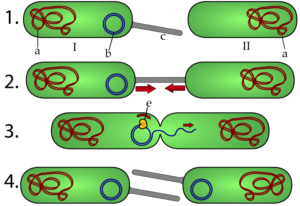
Bacterial conjugation. Letter “b” is a plasmid. Note that in the case of antibiotic resistance, the genes are often on plasmids. Because of that, the spread of antibiotic resistance genes through reproduction is accompanied by the sharing of genes through conjugation, a type of horizontal gene transfer that we studied in AP Bio Unit 6 (and shown on the right). With both vertical and horizontal gene transfer at work, a bacterial population can evolve antibiotic resistance very quickly.
The widespread use of antibiotics in agriculture has accelerated the evolution of antibiotic-resistant bacterial strains.

In agriculture, antibiotics are used to prevent outbreaks of infection in animals that are kept in close confinement. In 2013, the US Department of Agriculture estimated that 32 million pounds of antibiotics were used in food animal production. That amounts to 80% of the antibiotics used in the United States.
As with humans, the antibiotics fed to animals (A) kill most of the bacteria, but not all of them. The ones that aren’t killed are the ones that have resistance to the antibiotics. Over time, this leads to the selection (B) for antibiotic-resistant strains (C). These can be transferred to people through animal products, through agricultural produce that’s been in contact with animal feces-contaminated soil or water, or during food preparation.
Methicillin is an antibiotic that was introduced in 1959. Within two years of its introduction, methicillin-resistant bacteria had been observed. These methicillin-resistant bacteria have come to be known by the acronym MRSA (methicillin-resistant S.aureus), and they’re much more dangerous than non-MRSA S. aureus. Sometimes, MRSA infections can be controlled by other antibiotics. But the concern is that our arsenal of effective antibiotics is growing increasingly thin, as the bacteria mutate around whatever selective pressure our use of antibiotics creates.
Is this evidence for evolution? Absolutely. With the rise of antibiotic-resistant bacteria, we have a clear example of descent with modification. In this case, the phenotype is resistance to the antibiotic. The genotype is the set of genes that code for the proteins that confer antibiotic resistance.
Study the flashcards below before continuing.
8. Flashcards: SARS-CoV-2 Variants and Antibiotic Resistance
[qdeck bold_text=”false” style=”width: 600px !important; min-height: 400px !important;” qrecord_id=”sciencemusicvideosMeister1961-SARS-CoV-2 Variants and Antibiotic resistance (v2.0)”]
[h]SARS-CoV-2 Variants and Antibiotic resistance
[i] Biohaiku
Antibiotics
At first a miracle drug
Now, much less useful!
[start]
[q] How have changes in SARS-CoV-2 variants involved both genotype and phenotype?
[a] When SARS-CoV-2 infects someone and replicates, mutations occur. These mutations are genetic modifications or changes in genotype. These genetic changes can cause modifications in the virus’s phenotype, particularly in its spike protein.
[q] How has the spread of SARS-CoV-2 variants been an example of descent with modification?
[a] Each new variant is a modified descendant of a previous strain. If these modifications make the new variant better at infecting people and spreading throughout populations, then it becomes the most common variant.
[q] The graph below shows how…
[a] The graph on the other side shows how successive waves of viral variants have spread through the human population.
[q] Each new SARS-CoV-2 variant started with a _____________ which was subsequently selected by the environment. In this case, the environment involved human ________________ and human _______________.
[a] Each new SARS-CoV-2 variant started with a mutation that was subsequently selected by the environment. In this case, the environment involved human biology and human behavior.
[q] A medicine that destroys harmful bacteria is an ________.
[a] A medicine that destroys harmful bacteria is an antibiotic.
[q] Bacteria that are not killed or inhibited by antibiotics are said to be ______________.
[a] Bacteria that are not killed or inhibited by antibiotics are said to be antibiotic resistant
[q] Use the image below to tell the story of how antibiotic resistance can evolve.
[a] “A” shows a bacterial population with variation. “B” shows how most of the bacteria will be killed by the antibiotic, but some — the ones with pre-existing genes for antibiotic resistance — will survive. “C” shows how when antibiotic-resistant bacteria reproduce, they’ll pass on their genes to their descendants. As a result, the new population (the descendants) will mostly be antibiotic-resistant.
[q] A big cause of the rise of antibiotic resistance (illustrated below) has been the overuse of antibiotics in ____________
[a] A big cause of the rise of antibiotic resistance (illustrated below) has been the overuse of antibiotics in agriculture.
[q] A strain of S.aureus that is of particular concern is
[a] A strain of S. aureus that is of particular concern is MRSA.
[q] Descent with modification involves changes in phenotype and genotype. What are the genotypes and phenotypes involved in the evolution of antibiotic-resistant bacteria?
[a] The phenotype is the resistance of features (mostly biochemical) that provide resistance to antibiotics. The genotype involves the genes that code for these features.
[q]Antibiotic resistance in bacteria has spread particularly fast because antibiotic genes are often on ________________, making ___________ gene transfer possible.
[a]Antibiotic resistance in bacteria has spread particularly fast because antibiotic genes are often on plasmids, making horizontal gene transfer possible.
[/qdeck]
9. Evolution of Pesticide Resistance in Mosquitoes
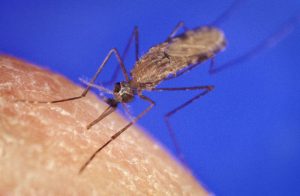
Malaria is a tropical disease caused by a parasite that infects a person’s red blood cells. Malaria is the number 1 killer of children worldwide. The disease is particularly prevalent in sub-Saharan Africa (source: Forgotten Children Worldwide)
Mosquitoes are the primary way that the parasite that causes malaria spreads from one person to the next.
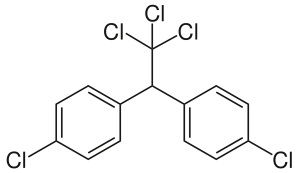
One approach to controlling malaria has been to suppress mosquito populations with insecticides (insect-killing chemicals). One such pesticide is DDT.
Based on the story of antibiotic resistance in bacteria, you should be able to predict what happened when DDT started to be used to control the mosquitoes that spread malaria.
Here’s a graph showing what happened when scientists studied the survival of mosquitoes to exposure to a DDT solution for one hour, every day, for 18 months.
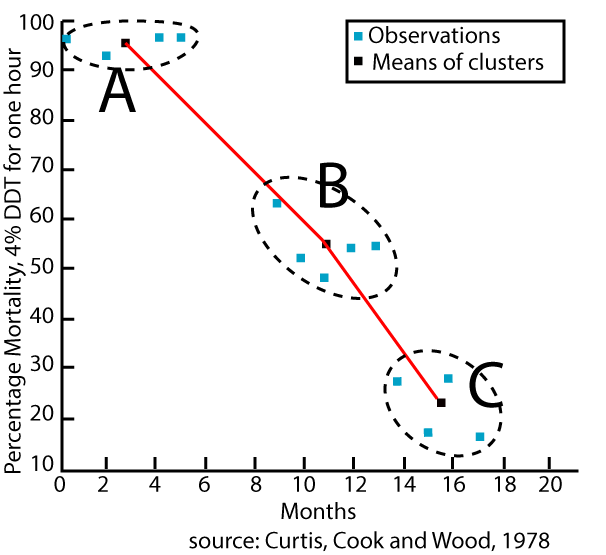 The X-axis on the graph shows time. The Y axis shows the percentage of mortality. Mortality is the number of deaths in a given period of time. For example, the mortality at point A is over 90%. That means that 90% of the mosquitoes were killed after one hour of exposure to the test solution (4% DDT).
The X-axis on the graph shows time. The Y axis shows the percentage of mortality. Mortality is the number of deaths in a given period of time. For example, the mortality at point A is over 90%. That means that 90% of the mosquitoes were killed after one hour of exposure to the test solution (4% DDT).
Note how different the mortality rate is at point B (10 months) and point C (16 months)
Based on what we learned about bacterial resistance to antibiotics, you can probably explain what’s happening. Study the graph and answer the questions that follow.
[qwiz qrecord_id=”sciencemusicvideosMeister1961-DDT Resistance In Mosquitoes (v2.0)”]
[h] DDT Resistance In Mosquitoes
[q] At which period (A, B, or C) did the vast majority of the mosquitoes have pesticide resistance?
[textentry single_char=”true”]
[c]IE M=[Qq]
[f]IEV4Y2VsbGVudC4gQXQgcG9pbnQgJiM4MjIwO0MsJiM4MjIxOyBvbmx5IGFib3V0IDIwJSBvZiB0aGUgbW9zcXVpdG9lcyBhcmUgZHlpbmcgYWZ0ZXIgMSBob3VyIG9mIGV4cG9zdXJlIHRvIHRoZSBzb2x1dGlvbi4gSWYgdGhleSYjODIxNztyZSBub3QgZHlpbmcsIHRoZXkgbXVzdCBiZSByZXNpc3RhbnQu[Qq]
[c]IEVudGVyIHdvcmQ=[Qq]
[f]IFNvcnJ5LCB0aGF0JiM4MjE3O3Mgbm90IGNvcnJlY3Qu[Qq]
[c]ICo=[Qq]
[f]IE5vLiBGaW5kIHRoZSBwb2ludCBpbiB0aW1lIHdoZW4gdGhlIG1vcnRhbGl0eSAodGhlIGFtb3VudCBvZiBkZWF0aCkgaXMgdmVyeSBsb3cuIFRoYXQmIzgyMTc7cyB3aGVuIG1vc3Qgb2YgdGhlIHBvcHVsYXRpb24gaXMgcmVzaXN0YW50Lg==[Qq]
[q] At which period (A, B, or C) were the majority of the mosquitoes killed by DDT?
[textentry single_char=”true”]
[c]IE E=[Qq]
[f]IEV4Y2VsbGVudC4gQXQgcG9pbnQgJiM4MjIwO0EsJiM4MjIxOyB0aGUgbW9ydGFsaXR5IGlzIGFsbW9zdCAxMDAlLiBUaGF0IG1lYW5zIHRoYXQgYXQgdGhpcyBwb2ludCwgdGhlIG1vc3F1aXRvZXMgYXJlIHN1c2NlcHRpYmxlIHRvIEREVC4=[Qq]
[c]IEVudGVyIHdvcmQ=[Qq]
[f]IE5vLCB0aGF0JiM4MjE3O3Mgbm90IGNvcnJlY3Qu[Qq]
[c]ICo=[Qq]
[f]IE5vLiBGaW5kIHRoZSBwb2ludCBpbiB0aW1lIHdoZW4gdGhlIG1vcnRhbGl0eSAodGhlIGFtb3VudCBvZiBkZWF0aCkgaXMgdmVyeSBoaWdoLiBUaGF0JiM4MjE3O3Mgd2hlbiBtb3N0IG9mIHRoZSBwb3B1bGF0aW9uIGlzIHN0aWxsIGJlaW5nIGtpbGxlZCBieSBERFQu[Qq]
[q] At point “C” in the graph below, most of the mosquitoes were [hangman] to DDT.
[c]IHJlc2lzdGFudA==[Qq]
[f]IEdvb2Qh[Qq]
[q]Which of the following statements is correct?
[c]V2hlbiBleHBvc2VkIHRvIEREVCwgbW9zcXVpdG9lcyBkZXZlbG9wIG11dGF0aW9ucyB0aGF0IGVuYWJsZSB0aGVtIHRvIHN1cnZpdmUuIFRoZSBzdXJ2aXZvcnMgdGhlbiBwYXNzIG9uIHRoZWlyIGJlbmVmaWNpYWwgbXV0YXRpb25zIHRvIHRoZSBuZXh0IGdlbmVyYXRpb24u[Qq]
[f]Tm8uIEREVCBkb2VzbiYjODIxNzt0IGNhdXNlIHRoZSBtdXRhdGlvbi4gUmF0aGVyLCBERFQgaXMgd2hhdCBzZWxlY3RzIHdoaWNoIGluZGl2aWR1YWxzIGNhbiBzdXJ2aXZlLCBhbmQgd2hpY2ggZ2V0IGVsaW1pbmF0ZWQgZnJvbSB0aGUgcG9wdWxhdGlvbi4=[Qq]
[c]TW9zcXVpdG8gcG9wdWxhdGlvbnMgaGF2ZSBnZW5ldGljIHZhcmlhdGlvbnMuIFdoZW4gZXhwb3NlZCB0byBERFQsIHRob3NlIHZhcmlhbnQgdHlwZXMgd2l0aCBE RFQgcmVzaXN0YW5jZSBzdXJ2aXZlIGFuZCBwYXNzIHRoZSBhbGxlbGVzIHRoYXQgY29kZSBmb3IgcmVzaXN0YW5jZSB0byB0aGUgbmV4dCBnZW5lcmF0aW9uLg==[Qq]
[f]RXhhY3RseS4gTmF0dXJhbCBzZWxlY3Rpb24gc2VsZWN0cyBpbmRpdmlkdWFscyB3aG8gaGF2ZSBiZW5lZmljaWFsIHRyYWl0cy4gVGhlIHN1cnZpdm9ycyBwYXNzIHRoZWlyIGdlbmVzIGZvciB0aGUgdHJhaXRzIG9uIHRvIHRoZSBuZXh0IGdlbmVyYXRpb24u[Qq]
[q]The rise of SARS-CoV-2 variants that can evade the human immune system, bacteria that are resistant to [hangman], or mosquitos that are resistant to [hangman] such as DDT all came about through [hangman] [hangman] and are all examples of [hangman] that have been directly observed.
[c]YW50aWJpb3RpY3M=[Qq]
[c]cGVzdGljaWRlcw==[Qq]
[c]bmF0dXJhbA==[Qq]
[c]c2VsZWN0aW9u[Qq]
[c]ZXZvbHV0aW9u[Qq]
[/qwiz]
Before moving on, it’s important to note that the evolution of resistance is a widely observed phenomenon. Other examples include the emergence of
- Weeds that are resistant to herbicides
- Viruses that are resistant to anti-viral drugs
- Cancer cells that are resistant to chemotherapy drugs that are targeted to kill cancer cells
In every case, the evolutionary dynamic is essentially the same. Pre-existing variations allow some members of the population (which can be organisms, cells, or viruses) to survive whatever has been designed to kill that population. The survivors pass on their genes to their descendants. In short order, the entire population is resistant. The faster the population reproduces, the more quickly resistance can arise.
10. Evolution of new phenotypes in response to host changes in the Soapberry bug

The soapberry bug (Jadera haematoloma) lives in the southeastern United States, with its range stretching from Florida to Oklahoma. It uses a needle-like beak to pierce the outside skin of a fruit, and then pierce the seed coat of seeds within the fruit. Enzymes liquefy the seeds, and the bugs suck up the liquified seed contents.
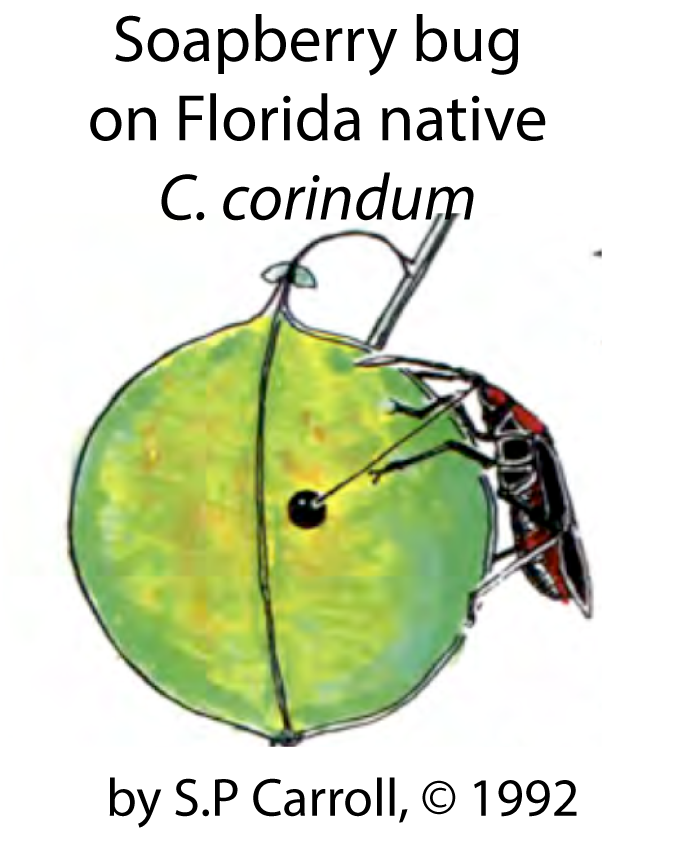
On the right is a drawing by UC Davis Professor Scott P. Carroll of a soapberry bug feeding on the fruit that’s native to Florida, Cardiospermum corindum. Note the distance between the fruit’s skin and its seed, and the corresponding length of the soapberry bug’s beak.
In historical times (within the last 150 years), several plant species have been introduced from Europe and Asia into the range of the soapberry bug. These introduced species have fruit in which the distance between the outside skin and the seeds inside is different from that of the native species. In Florida, the introduced species (Koelreuteria elegans) had a fruit structure in which the seeds were much closer to the skin of the fruit than in the Florida native, C. corindum.
In the interactive reading below, you can interpret what happened.
[qwiz qrecord_id=”sciencemusicvideosMeister1961-Rapid evolution in the soapberry bug (v2.0)”]
[h]Rapid evolution in the soapberry bug
[i]Note that in this graph, the values above and below the 0 line are positive.
[q labels = “top”]The graph below shows how there’s a correlation between the distance between the wall of the fruit and the surface of the ________, and the length of the soapberry bug’s __________. The population with the __________ beaks are those which feed on the __________ fruit, in which there’s a greater distance between the fruit wall and the seed.
[l]beak
[fx] No, that’s not correct. Please try again.
[f*] Great!
[l]longest
[fx] No, that’s not correct. Please try again.
[f*] Great!
[l]native
[fx] No. Please try again.
[f*] Correct!
[l]seed
[fx] No. Please try again.
[f*] Great!
[q labels = “top”]The table below shows what happened in Florida in soapberry bug populations that started feeding on the introduced species. Using logic and your understanding of natural selection, match the average beak length of the soapberry bugs with the plants they feed upon.
| Host Plant | Origin | Average distance from fruit wall to seed (mm) | Average beak length (mm) |
| Balloon Vine (C. corindum) | Native | 9.32 | _______ |
| Goldenrain tree (K. elegans) | Introduced | 2.82 | _______ |
[l]6.93
[fx] No. Please try again.
[f*] Great!
[l]11.92
[fx] No. Please try again.
[f*] Excellent!
[q labels = “bottom”]Let’s interpret these results. Note that the labels are below the paragraph.
| Host Plant | Origin | Average distance from fruit wall to seed (mm) | Average beak length |
| Balloon Vine (C. corindum) | Native | 9.32 | 11.92 |
| Goldenrain tree (K. elegans) | Introduced | 2.82 | 6.93 |
When soapberry bug populations colonized the introduced host (the Goldenrain tree), these populations ___________ to their host’s fruit structure. What’s notable is the ___________ with which this shift occurred: a few dozen ______________. Additionally, when eggs from one host were transplanted to the other, the offspring’s beaks maintained the length of the population from which the eggs were harvested. This shows that the shift in _____________ was based on an underlying ____________ change. (source: Campbell, Biology, 11th edition, page 475).
[l]adapted
[fx] No. Please try again.
[f*] Great!
[l]generations
[fx] No. Please try again.
[f*] Good!
[l]hereditary
[fx] No. Please try again.
[f*] Great!
[l]phenotype
[fx] No. Please try again.
[f*] Good!
[l]speed
[fx] No, that’s not correct. Please try again.
[f*] Excellent!
[q]To summarize. In the introduced fruit K. elegans the distance between the fruit wall and the seed is much [hangman] than it is in the native fruit, C. corindum. In those populations of the soapberry bug that began to exploit the fruit of this new host, there was less [hangman] pressure for extremely long beaks. Bugs with [hangman] beaks experienced no loss of evolutionary [hangman] (and might have increased their fitness since less energy was required to build a very long [hangman]. Within a few dozen generations, populations exploiting K. elegans had significantly shorter beaks than populations on the native fruit, making this a documented example of [hangman] with [hangman].
[c]bGVzcw==[Qq]
[c]c2VsZWN0aXZl[Qq]
[c]c2hvcnRlcg==[Qq]
[c]Zml0bmVzcw==[Qq]
[c]YmVhaw==[Qq]
[c]ZGVzY2VudA==[Qq]
[c]bW9kaWZpY2F0aW9u[Qq]
[/qwiz]
11. More Examples of Historically Observed Evolution
There are many other examples of evolutionary change that’s been directly observed.
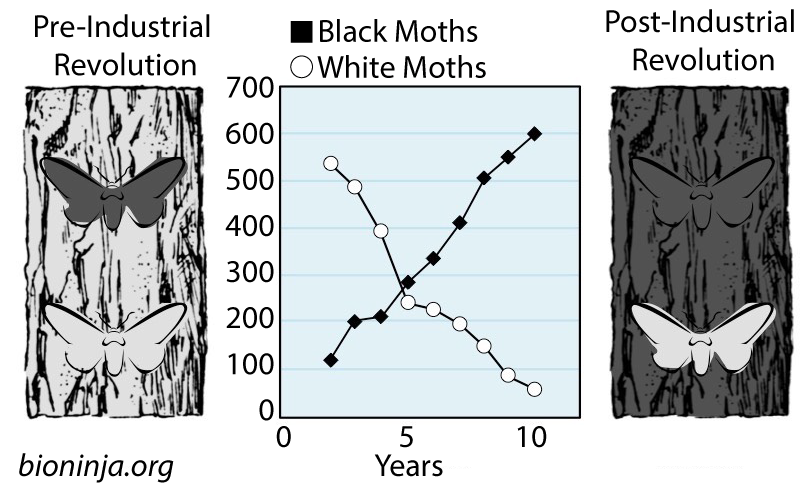 In the previous topic, we learned about the peppered moth, which underwent a change from light coloration to dark coloration and then back to light coloration in response to environmental changes. These changes unfolded in a few decades as industrial pollution changed the environment in England’s forests.
In the previous topic, we learned about the peppered moth, which underwent a change from light coloration to dark coloration and then back to light coloration in response to environmental changes. These changes unfolded in a few decades as industrial pollution changed the environment in England’s forests.
While the phenomenon of color change in response to pollution — known as industrial melanism — was first identified by naturalists in the 1800s, it wasn’t subject to rigorous experimentation until the 1950s, when B.D. Kettlewell systematically observed bird predation driving selection in moths. Kettlewell’s work was subsequently attacked by creationists and then validated by a series of experiments in the early 2000s by Michael Majerus. You can read more about peppered moth biology on Wikipedia.- The three-spine stickleback, which we looked at in the context of gene regulation, has been observed to lose its pelvic spines when adapting to freshwater environments. Recent research indicates that this change can happen in as little as 50 years.
- John Endler performed a series of natural selection experiments in which the 15 generations of natural and sexual selection could alter the phenotype of guppies. You can read a summary of Endler’s experiments on the UC Berkeley Evolution website. For a much deeper dive, you can read Endler’s paper in Evolution, Volume 34, Issue 1.
12. Flashcards: Historical Examples of Evolution
[qdeck bold_text=”false” style=”width: 600px !important; min-height: 450px !important;” qrecord_id=”sciencemusicvideosMeister1961-Historical examples of evolution FC (v2.0)”]
[h] Historical examples of evolution
[q] Your talking to a relative who says “If evolution is true, why has it never been observed?” You say, “Actually…”
[a] You might say. There are many examples of evolution that have been observed in the past two hundred or so years. These include
- the evolution of variants of SARS-CoV-2.
- the rise of antibiotic-resistant strains of bacteria.
- the rise of DDT-resistant strains of mosquitos
- Other examples of resistance:
- Viruses resisting anti-viral drugs
- Weeds resisting herbicides.
- Cancer cells resisting chemotherapy drugs.
- Color change in the peppered moth.
- Change in beak length in the soapberry bug in response to new food sources.
[q] How is the rise of SARS-CoV-2 variants an example of evolution?
[a] Viruses like SARS-CoV-2 can only spread if they can successfully reproduce inside a human host and then spread to a new host. As the human immune system adapted to SARS-CoV-2, those viruses with variations that allowed them to evade the human immune system and spread to others were selected for survival and reproduction and became the dominant variant. Hence the waves of variants we’ve experienced during the COVID-19 Pandemic: Alpha, Beta, Delta, and Omicron.
[q] How does resistance arise in viruses, bacteria, and cancer cells?
[a] Pre-existing variations allow some members of the population (which can be organisms, cells, or viruses) to survive whatever has been designed to kill that population. The survivors pass on their genes to their descendants. In short order, the entire population is resistant. The faster the population reproduces, the more quickly resistance can arise. Ongoing mutation renews the variation.
[q] Review: Antibiotic resistance in bacteria involves both vertical and horizontal gene transfer. Explain.
[a] Antibiotic resistance genes in bacteria are often found on plasmids. So, in addition to antibiotic resistance genes being transferred vertically (D, below), they can also be transferred by bacterial conjugation (a), as bacteria share plasmids with one another.
[q] The diagram below shows how the beak of the soapberry bug shifted in length over a few decades as new host plants were introduced into its habitat. Explain how this happened.
[a] Soapberry bugs use their beaks to pierce the skin of fruits to access their seeds. In the fruit in their native environment, the distance between the skin of the fruit and the seed selected for bugs with long beaks. In the new fruit that was introduced into their environment, the distance between the fruit wall and the seed was much less than it was in the native fruit. In those populations of the soapberry bug that began to exploit the new fruit, there was less selective pressure for long beaks. In fact, bugs with shorter beaks might have increased their fitness since less energy was required to build a very long beak. Within a few dozen generations, populations exploiting the introduced fruit had significantly shorter beaks than populations feeding on the native fruit, making this a documented example of descent with modification.
[x] [restart]
[/qdeck]
13. Cumulative Quiz: Historical Examples of Evolution
[qwiz qrecord_id=”sciencemusicvideosMeister1961-Historical Examples of Evolution Quiz (v2.0)”]
[h] Historical Examples of Evolution
[i]
[q] Because of the large body of evidence supporting evolution, it should be thought of as a [hangman], rather than a hypothesis.
[c]IHRoZW9yeQ==[Qq]
[f]IEdyZWF0IQ==[Qq]
[q] If evolution is true, then one should be able to provide evidence for descent with [hangman] in any specific lineage. For example, fossils would show that a currently existing species’ [hangman] are different from the current form of that species.
[c]IG1vZGlmaWNhdGlvbg==[Qq]
[f]IEdyZWF0IQ==[Qq]
[c]IGFuY2VzdG9ycw==[Qq]
[f]IEdyZWF0IQ==[Qq]
[q] Because of our overuse of antibiotics, many bacterial strains have become antibiotic [hangman].
[c]IHJlc2lzdGFudA==[Qq]
[f]IEdyZWF0IQ==[Qq]
[q] In the diagram below, images A and B show how antibiotic resistance was pre-[hangman], and then [hangman] for by overuse of antibiotics.
[c]IGV4aXN0aW5n[Qq]
[f]IEdyZWF0IQ==[Qq]
[c]IHNlbGVjdGVk[Qq]
[f]IENvcnJlY3Qh[Qq]
[q] In the diagram below, image D shows how antibiotic [hangman] in bacteria can spread through [hangman] gene transfer.
[c]IHJlc2lzdGFuY2U=[Qq]
[f]IEV4Y2VsbGVudCE=[Qq]
[c]IGhvcml6b250YWw=[Qq]
[f]IEdyZWF0IQ==[Qq]
[q] The difficult-to-treat strain of Staphylococcus aureus bacteria that has evolved in recent decades is known by the acronym [hangman].
[c]IE1SU0E=[Qq]
[f]IEdyZWF0IQ==[Qq]
[q]Since its introduction in the 1940s, DDT has become increasingly ineffective due to the evolution of pesticide [hangman] in mosquitoes that carry the parasite which causes [hangman].
[c]cmVzaXN0YW5jZQ==[Qq]
[c]bWFsYXJpYQ==[Qq]
[q multiple_choice=”true”] True or false: In response to DDT, mosquitoes developed a mutation that made them resistant.
[c]IHRydWU=[Qq]
[f]IE5vLiBOYXR1cmFsIHNlbGVjdGlvbiBpcyBub3QgYWJvdXQgcG9wdWxhdGlvbnMgcHJvZHVjaW5nIG11dGF0aW9ucyB0aGF0IGhlbHAgdGhlbSBzdXJ2aXZlIGVudmlyb25tZW50YWwgY2hhbGxlbmdlcy4gSXQmIzgyMTc7cyBhYm91dCB0aGUgZW52aXJvbm1lbnQgc2VsZWN0aW5nIHZhcmlhbnQgcGhlbm90eXBlcyB0aGF0IG1ha2UgdGhlIGluZGl2aWR1YWxzIHdobyBoYXZlIHRoZW0gbW9yZSBzdWl0ZWQgdG8gc3Vydml2aW5nIGFuZCByZXByb2R1Y2luZy4gVGhlIG11dGF0aW9uIHByZWNlZGVzIHRoZSBjaGFsbGVuZ2Uu[Qq]
[c]IGZh bHNl[Qq]
[f]IEV4Y2VsbGVudC4gTmF0dXJhbCBzZWxlY3Rpb24gaXMgbm90IGFib3V0IHBvcHVsYXRpb25zIHByb2R1Y2luZyBtdXRhdGlvbnMgdGhhdCBoZWxwIHRoZW0gc3Vydml2ZSBlbnZpcm9ubWVudGFsIGNoYWxsZW5nZXMuIEl0JiM4MjE3O3MgYWJvdXQgdGhlIGVudmlyb25tZW50IHNlbGVjdGluZyB2YXJpYW50IHBoZW5vdHlwZXMgdGhhdCBtYWtlIHRoZSBpbmRpdmlkdWFscyB3aG8gaGF2ZSB0aGVtIG1vcmUgc3VpdGVkIHRvIHN1cnZpdmluZyBhbmQgcmVwcm9kdWNpbmcuIFRoZSBtdXRhdGlvbiBwcmVjZWRlcyB0aGUgY2hhbGxlbmdlLg==[Qq]
[q]Like the mosquito, the soapberry bug is an example of an insect that [hangman] quickly in response to selective [hangman]. In the case of the soapberry bug, populations that exploited a new food resource quickly changed their [hangman]. Specifically, the [hangman] length of soapberry bug populations became significantly [hangman] in a few decades.
[c]ZXZvbHZlZA==[Qq]
[c]cHJlc3N1cmU=[Qq]
[c]cGhlbm90eXBl[Qq]
[c]YmVhaw==[Qq]
[c]c2hvcnRlcg==[Qq]
[q]Evolution of antibiotic resistance in bacteria has been accelerated by the fact that in addition to surviving bacteria passing genes for resistance to their offspring, bacteria can also share resistance genes through the process of bacterial [hangman]. That’s because these resistance genes are often found on [hangman].
[c]Y29uanVnYXRpb24=[Qq]
[c]cGxhc21pZHM=[Qq]
[/qwiz]
What’s next?
Proceed to Topics 7.6 – 7.8, Part 2: Homologous and Vestigial Structures, the next tutorial in AP Bio Unit 7.
